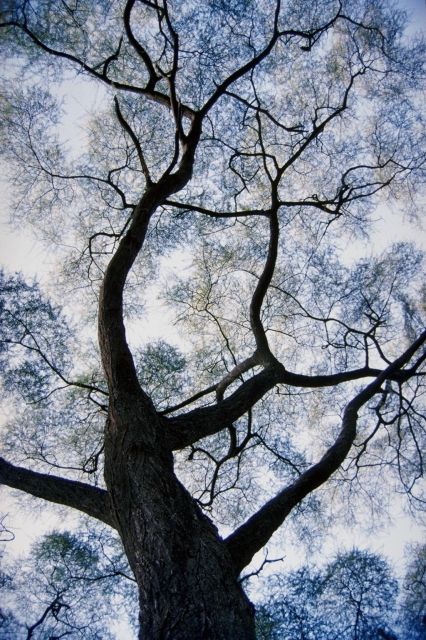Day 1, Monday 7/8/02
i. Began by cutting away small saplings from site, working around previously marked features.
ii. Raked leaves off the site. I discovered a yellow jacket nest, which was then marked.
iii. Began measuring 5’squares, labeling each by their N & E coordinates.
iv. Marked off 5 units, and divided into pairs for each unit. (Mine is #538)
v. Took measurements of units, which I will add tomorrow.
Altogether the day was busy, but we didn’t get to any excavation yet. We will start tomorrow.
Day2, Tuesday 7/9/02
i. Here are the measurements I mentioned yesterday: Our opening measurements are as follows: SE=.86, NE=1.11, NW=.80, SW=.19, C=.86, String=.31, our Stratigraphic Def: “Below a layer of leaf litter removed a layer of duff (leaf mold), below which was 10 YR 4/3 Brown Silt Clay Loam “
ii. After proceeding as the above states, we continued on layer A, screening each bucket we removed from the unit. We used clippers to trim back roots, and the usual trowels, dustpans, and brushes (to remove dirt from the rocks in the unit).
iii. Artifacts found: bone fragments, charred wood (yet another bone fragment is becoming visible, but has not yet been removed).
iv. As we closed the unit today, many roots still remained and we are still working on “A”.
This work day seemed to go faster and it was interesting to get into the actual digging (after sharpening the Marshalltowns, of course). This afternoon we began “lab”. Erin and I worked with Lynn and Reagan “sampling the samples” in Lynn’s words. We were sorting the “keepers” from the items that were just taking up space. We dealt mostly with brick, stone and the like. We recorded if it was glazed/unglazed, greenstone/quartz, etc. We measured its weight and how many there were before and after deciding which ones were better to keep. The lab helped me because I feel I have a better handle on telling brick from stone now. (Many false “brick” alarms occurred in the units.) I also know what makes an item a “keeper”, such as flat cut surfaces, etc.
Day 3, Wednesday 7/10/02
i. Uncovered the site- carefully kept rain water from running into the features.
ii. Continued removing layer “A”, screened some buckets of soil.
iii. It began to rain, we kept excavating
iv. Ran the metal detector over our unit, no hits were recorded.
v. Spent the rest of the afternoon excavating “A”, and removing and screening buckets of soil, which were then tested by the metal detector.
vi. Although no metal was found, more charred wood and bone appeared and was put in the artifacts box.
During lab Erin and I continued working with Lynn and Reagan, weighing, counting, and “sampling” the samples of rock, pedestals, brick (glazed, un-glazed, and burned), mortar, etc. Erin and I discovered a nail embedded in some brick that the archaeologists before had overlooked. It was a great find!
Day 4, Thursday 7/11/02
i. Although I began in unit 538, this morning I opened a new unit, 541 with Kevin
ii. Opening measurements of unit 541: SE=.36, NE=.16, NW=.45, SW=.18, C=.29, String=.49
iii. Began to excavate. Below a layer of leaf litter removed a level of 10 YR 5/3 Brown Loam with 35% leaf duff.
iv. Artifacts found: charred wood, 3 nails, unknown metal object
v. Continued removing soil, roots, and screening until the closing of “A” at: SE=.73, NE=.49, NW=.64, SW=.57, C=.73, String=.49 –a layer of Dark Yellowish Brown 10 YR 4/4 clayey silty loam with 5% charred wood.
vi. Began a new unit- yet unnamed
vii. Removed leaf litter from new unit
Day 5, Monday 7/15/02
i. Began by naming unit 545 and continuing to remove leaf litter.
ii. After leaf litter was removed sketched unit. Was not able to take opening elevations yet.
iii. Worked on drawing a profile of the site starting 15 feet beyond (in either direction) and traveling thru units 534-538. Took elevations of the ground to draw a contour of the site’s surface.
In lab worked in screening heavy fraction (mortar, brick, etc.) using a series of screens; ½”, ¼”, 1/8”, window screen (1/16”), and No-See-Um screen (fine screen). Before screening a total measurement of all material is made in cups. Once screened, the material is again measured, since it has been divided into smaller groups. It is all bagged and labeled by particle size and placed in a master bag for the set. Particles larger than ½” are sorted by type as well (ex: brick, mortar, plaster).
Day 6, Tuesday 7/16/02
i. Used transit to map in some points in unit 540 for the sitemap.
ii. Worked in unit 540 (begun by Beth and Beth).
iii. Closing elevations: String=.42, NE=.84, SE=.63, NW=.83, SW=.49, C=.83
iv. Tried to re-construct the opening elevations which had been recorded incorrectly: String=.42, NE=.59, SE=. 41, NW=.56, SW=.29, C=.59
v. Stratigrafic Definition: Below a layer of leaf litter removed a layer of 7.5YR 4/2 Brown/Dark Brown silty clay loam down to 7.5YR 5/4 Brown silty clay loam. Level A partially contained level A-F68 which consisted of 7.5YR 3/2 Dark Brown silty loam.
vi. Artifacts: Level A - Nails, Percussion cap, charred wood, bone, ceramic stoneware; LevelA-F68 – Ceramic stoneware, Gardener bullet, bone, charred wood

